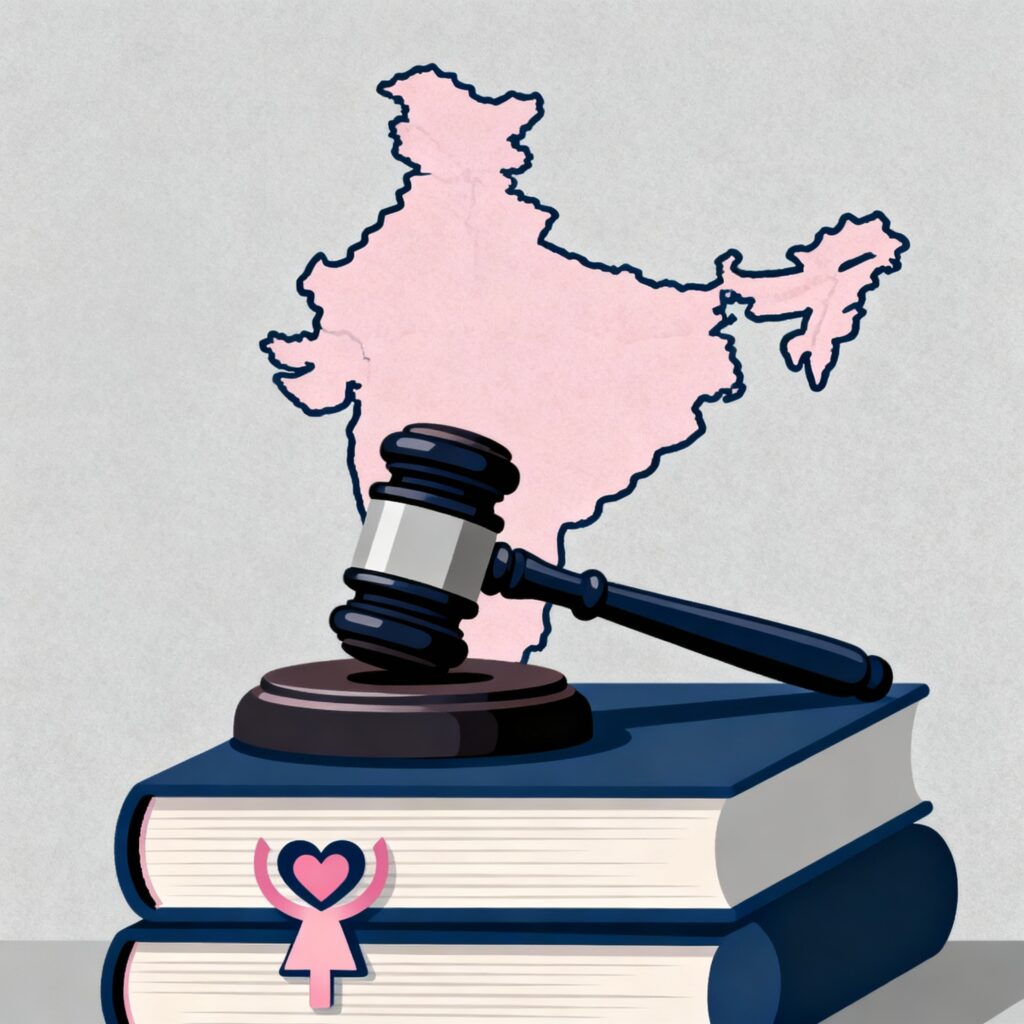Published on: 16th November 2025
Authored by: Krishna Sutariya
Balaji School Of Law (BSL), Pune
Name of the case– Laxmi vs. Union of India & ors
Citation– AIR 2014 SCC (4) 427
Case Number- Writ Petition (Crl.) No. 129 of 2006
Date of Judgement– 10th April 2015
Bench– R.M. Lodha and F.M. Ibrahim Kalifulla, JJ.
Appellant– Laxmi
Respondent– Union of India and Others
Court – Supreme Court of India
FACT OF THE CASE
Acid attacks are a brutal form of violence in which acid or another corrosive agent is deliberately thrown at a person, most often targeting women or young girls, with the intent to injure, disfigure, torture, or kill. In the case of Laxmi vs. Union of India, a landmark moment in the fight against acid violence in India. Laxmi, a young woman, was just 15 years old when she became the victim of a brutal acid attack in 2005. The attack was orchestrated by a man whose romantic advances she had refused. This traumatic event left her with severe facial disfigurement and emotional scars, changing the course of her life entirely.
Instead of remaining silent, Laxmi turned her tragedy into a mission for justice and reform. She filed a mission for justice and reform. She filed a Public Interest Litigation (PIL) before the Supreme Court of India, demanding stricter laws, regulated sale of acid, and proper medical treatment and compensation for survivors. Her petition highlighted the easy availability of acid and the lack of adequate legal provisions to prevent such heinous crimes.
The case prompted the Supreme Court to examine the legal gaps and governmental inaction in addressing acid violence. In response, the court issued several directives to regulate the sale of acid across the country, ensure better rehabilitation for victims, and strengthen existing criminal laws. It led to the inclusion of Sections 326A and 326B in the Indian Penal Code through the Criminal Law (Amendment) Act, 2013, which specifically dealt with acid attacks and prescribed stringent punishments.
According to her medical report, Laxmi suffered acid burns over approximately 25% of her upper body, including her face, chest, eyes, and other areas. She was later admitted to Ram Manohar Lohia Hospital for treatment.
The case was prosecuted under Section 307 of the Indian Penal Code (attempt to murder) and Section 120B (criminal Conspiracy). The trial court found that the accused challenged the verdict in the Delhi High Court, which later granted them bail.
Laxmi’s efforts not only helped bring about legal reform but also raised national awareness about the physical, emotional, and social consequences of acid attacks, thereby becoming a powerful voice for survivors across India.[1]
ISSUE OF THE CASE
- Should there be specific rules established for prosecuting those responsible for acid attacks and for ensuring the rehabilitation of survivors?
- Is it necessary to develop tailored programs to offer compensation to crime victims, especially those affected by acid violence?
- Should acid in all its forms be classified as a restricted substance that cannot be easily accessed or purchased over the counter?
- Can medical institutions justifiably deny treatment to acid attack victims by citing the absence of adequate facilities?
- Should legal action be initiated against hospitals or clinics that turn away acid attack victims, thereby violating section 357-C of the Code of Criminal Procedure, 1973?
- Is there a need to establish a dedicated board to provide compensation to victims of criminal injuries?
ARGUMENTS OF THE CASE
1. Contentions Raised by the Petitioner’s:
- The petitioner raised concerns over how effortlessly acid was accessible in local markets without stringent checks or controls.
- She emphasized the severe and lasting consequences of acid attacks, highlighting the profound physical injuries as well as the deep emotional and psychological trauma endured.
- She urged the authorities to implement structured rehabilitation measures for victims to aid in their recovery and reintegration into society.
- It was pointed out that existing legal provisions failed to treat acid attacks as serious and distinct crimes, instead viewing them as routine incidents. She called for stricter enforcement and harsher sentencing to deter such heinous acts.
- The petitioner also advocated for guaranteed access to medical assistance and financial support for survivors, stressing that victims should not be denied free treatment or compensation for their suffering.
2. Contentions Raised by the Respondent’s:
- The central Government, through the Solicitor General, informed the court that it would enforce the model guidelines to regulate acid sales within a week.
- These standardized rules, derived from the provisions of the 1919 Poisons Act, would apply uniformly to all states and the Union Territories to control the distribution of acid and other hazardous substances.
- It was further assured that the model guidelines would address multiple aspects, including the categories of acids permitted for sale (both liquid and solid forms), the procedure for licensing, and the intended purpose for use. Whether for commercial, educational, or institutional activities. This would cover sectors such as research, healthcare, industry, and public services.
- The legal representatives for the state of Tamil Nadu pledged that a robust and comprehensive regulatory framework for the control of acid and other dangerous substances would be introduced within two months of the ruling.
- Additionally, the administrations of various states and union territories committed to eliminating any legal leniency, stating that bail provisions for violations under the 1919 Poisons Act would be strictly curtailed or abolished altogether.[2]
LAWS RELATE TO THE CASE
Amendments to the Indian Penal Code:
1. Section 326A- Inflicting grievous harm using acid or a similar substance
Any individual who causes full or partial harm, disfigurement, disability, or burns to any person, or any body part, by throwing acid or through other methods, with the intention or knowledge of likely causing such injury, shall be penalized with imprisonment for a period not less than 10 years, which may extend to life imprisonment, along with a fine.
2. Section 326B- Attempting or threatening to throw acid
Anyone who attempts or threatens to throw acid or any other corrosive substance to cause burns, permanent or temporary harm, disfigurement, or serious injury shall be imprisoned for a minimum of five years, which may be extended up to seven years, and will also be subject to a fine.
Explanation 1: For Sections 326A and 326B, the term “acid” refers to any substance possessing acidic or corrosive properties, or any substance capable of causing bodily harm or burns.
Explanation 2: Under Section 326A, it is not necessary for the bodily harm, partial or complete damage, or deformity caused to be irreversible.
3. Amendment to the Indian Evidence Act
Section 114B was inserted, which relates to acid attack incidents. It states that if someone is found to have thrown or administered acid on another with the intent or awareness of causing injury or harm as described in Section 326A of the IPC, the court shall presume the act was done with malicious intent.
JUDGMENT OF THE COURT IN THIS CASE
The Supreme Court of India laid down a set of directions concerning the purchase and sale of acid. As per the directives, individuals below the age of 18 are prohibited from purchasing acid, and vendors are strictly barred from selling it to them. Any buyer must present a valid photo identification and specify the intended use of the acid. Additionally, sellers are required to report this information to the nearest police station. They must also submit a report detailing their stock to the Sub-Divisional Magistrate (S.S.M.), who holds the authority to confiscate any unreported acid inventory.
Moreover, the Supreme Court mandated that acid meant for scientific, academic, or institutional research must be properly documented. Institutions are required to maintain a register noting the quantity, usage, and the purpose for which the acid is utilized.
The Criminal Law (Amendment) Act, 2013, brought significant changes to the Indian Penal Code (IPC), Criminal Procedure Code (CrPC), and the Indian Evidence Act by categorizing acid attacks as serious criminal offences. This amendment introduced Sections 326A and 326B into the IPC, prescribing stringent penalties-including up to life imprisonment those found guilty. The Indian Evidence Act was also modified through the inclusion of Section 114B. The victim is entitled to compensation of at least three lakh rupees.
Additionally, the Supreme Court instructed all States and Union Territories to faithfully implement its guidelines, particularly those concerning the compensation of acid attack survivors. It emphasized the necessity for private hospitals to provide treatment and strictly warned against the denial of medical aid on the grounds of inadequate infrastructure. Institutions that fail to comply with this directive are to face strict consequences.[3]
CONCLUSION
Acid attacks, which often affect vulnerable sections of society, are among the most brutal forms of violence. Even though significant reforms, like IPC Sections 326A and 326B, and regulations on acid sales have been introduced, challenges remain in victim support and law enforcement.
Landmark judgments such as Laxmi vs. Union of India have played a crucial role in setting strong precedents for victim care and compensation. Nevertheless, to eliminate this issue, there is a continued need for large-scale rehabilitation initiatives, strong awareness programs, and effective implementation of laws. The case led to key changes and additions in legal provisions to ensure stricter punishment for offenders, and also made it easier to report such crimes. These legal changes have enhanced protections for women under the updated guidelines stemming from this judgment.
[1] Indian Kannon “Laxmi vs. Union of India& ors 10th April” https://indiankanoon.org/doc/90443079/
[2] Law Bhommi “Laxmi vs. Union of India& ors “23 February, 2023 https://lawbhoomi.com/laxmi-vs-union-of-india-and-others/
[3] Grace Deebthee John “Laxmi vs. Union of India (Landmark Judgement) A case Analysis” 23 January 2025
https://lawfullegal.in/laxmi-v-union-of-india-landmark-judgment-a-case-analysis/




